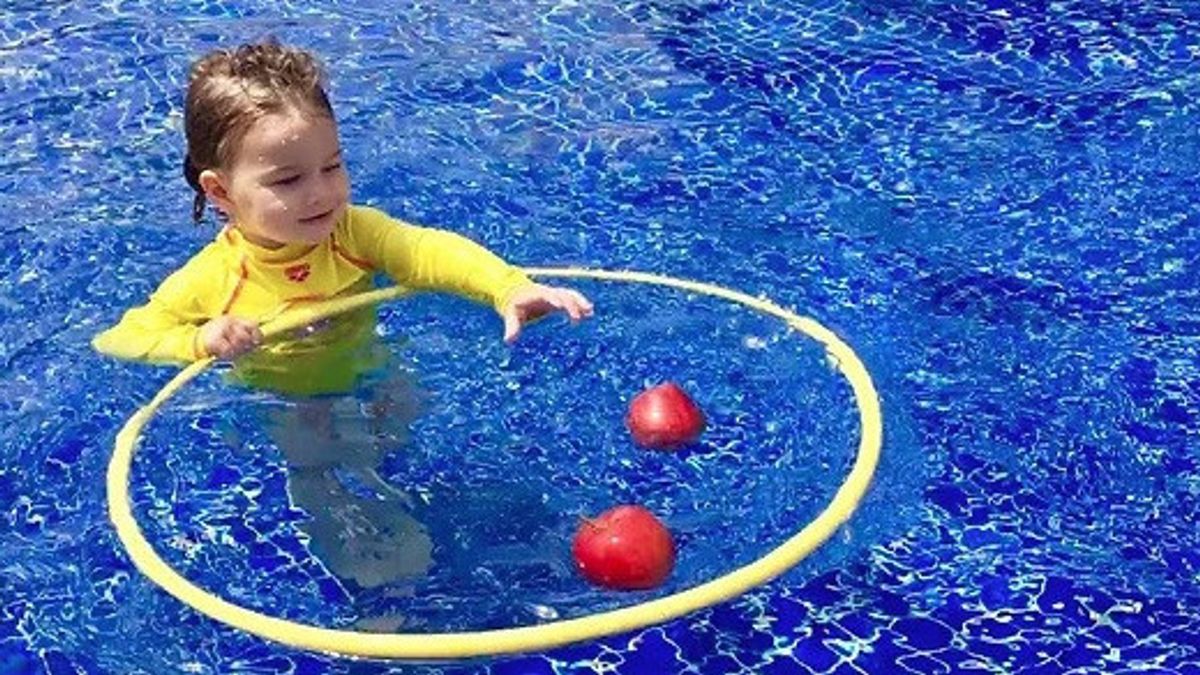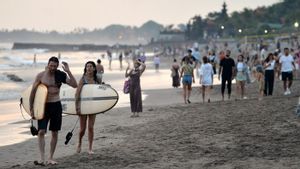JAKARTA Actress Tamara Tyasmara is grieving after her son, Dante, died at the age of six. Dante reportedly died of drowning while swimming.
In a recent statement, Tamara took Dante to the swimming pool in the Pondok Kelapa area, East Jakarta. Due to clashes with filming schedules, Dante was finally entrusted to adults he trusted.
Long story short, Tamara Tyasmara admitted that her son was already given first aid with artificial breath when she was on her way to pick up her son.
"I don't know what the story is, it's already disbursing, maybe it's a child looking at the water, I can't wait, maybe we don't know," said Tamara Tyasmara.
According to Tamara, Dante was able to swim and had swimming lessons since the age of six months.
The incident of a child drowning while in a swimming pool is not the only time this has happened. On January 31, 2024, it was discovered that a high school student (SMA) in Lumajang, East Java with the initials MR (18) died allegedly because he drowned after taking the swimming practice exam at Pemandian Alam Selokmbang Lumajang.
The case of death in the swimming pool also occurred in the Kalitaman Swimming Pool, Salatiga, Central Java. An eight-year-old boy, DF, had a water accident while swimming.
Swimming is one of the activities that many people like, including children. Launching the Ministry of Health (Kemenkes) page, in addition to being fun, swimming can have a positive impact for the long term.
In a review, it is stated that swimming is a sport that can be taught to all ages, both children and adults. According to dr. Mesty Ariotedjo, Sp.A, MPH children can be taught to swim even from an early age.
"This is the first sport that is recommended to be taught to your little one! Yes, swimming," said dr. Mesty on the X account @mestyariotedjo.
"AAP even recommends teaching this sport since the age of one," he added.
Meanwhile, revealed by the Ministry of Health, children can be taught to swim even since the baby. Swimming is the first safe sport introduced to babies because since the womb, babies have been swimming in airways so that it has become a baby habit.
The baby's motor skills that perform swimming therapy will also develop faster than babies who only play on the floor. That's because when swimming in water the effect of gravity is so low that it allows babies to move more and all muscles can work optimally.
The same thing was conveyed by the Australian national professional swimming coach, who revealed that teaching children to swim from an early age is useful for children's development and growth.
SEE ALSO:
Swimming has many benefits in babies and this is evidenced by a number of studies. Some of the benefits of swimming in babies include stimulating the baby's motor skills.
"By playing with water, the baby's muscles will develop very well, the joints grow optimally, the body growth increases and the body becomes flexible," quoted by the Ministry of Health.
In addition, babies who are trained to swim will have a better body balance. Swimming is also able to hone the baby's independence, courage, and self-confidence. On the other hand, swimming can increase thinking intelligence and concentration.
Doctor Mesty added that early swimming exercises were considered as an act to prevent accidents in swimming pools.
This accident is one of the 10 most causes of death in the 1-24 year age group. Even the WHO says, every 90 seconds one person dies from drowning, "wrote dr. Mesty.
The World Health Organization (WHO) says 2.5 million people in the world have died from drowning in the past decade. The majority of these deaths, which amounted to 90 percent, occurred in low- and middle-income countries.
Globally, the highest drowning rate occurred in children aged one to four years, followed by children aged five to nine years.
In commemoration of World Sinking Prevention Day in July 2023, WHO focused on increasing awareness of drowning as a public health issue. WHO also reminded the public about the increased awareness regarding six proven and low-cost drowning prevention interventions that can be used by countries and organizations to drastically reduce the risk of sinking.
The six drowning prevention interventions recommended by WHO are training rescue efforts, regulating and enforcing safe boating and shipping regulations, increasing flood risk management locally and nationally, installing safety fences to water access, providing safe places far from pools for preschoolers and being accompanied by adults, as well as teaching school-age children how to swim basicly, safety in water, and the ability to save themselves.
The English, Chinese, Japanese, Arabic, and French versions are automatically generated by the AI. So there may still be inaccuracies in translating, please always see Indonesian as our main language. (system supported by DigitalSiber.id)













